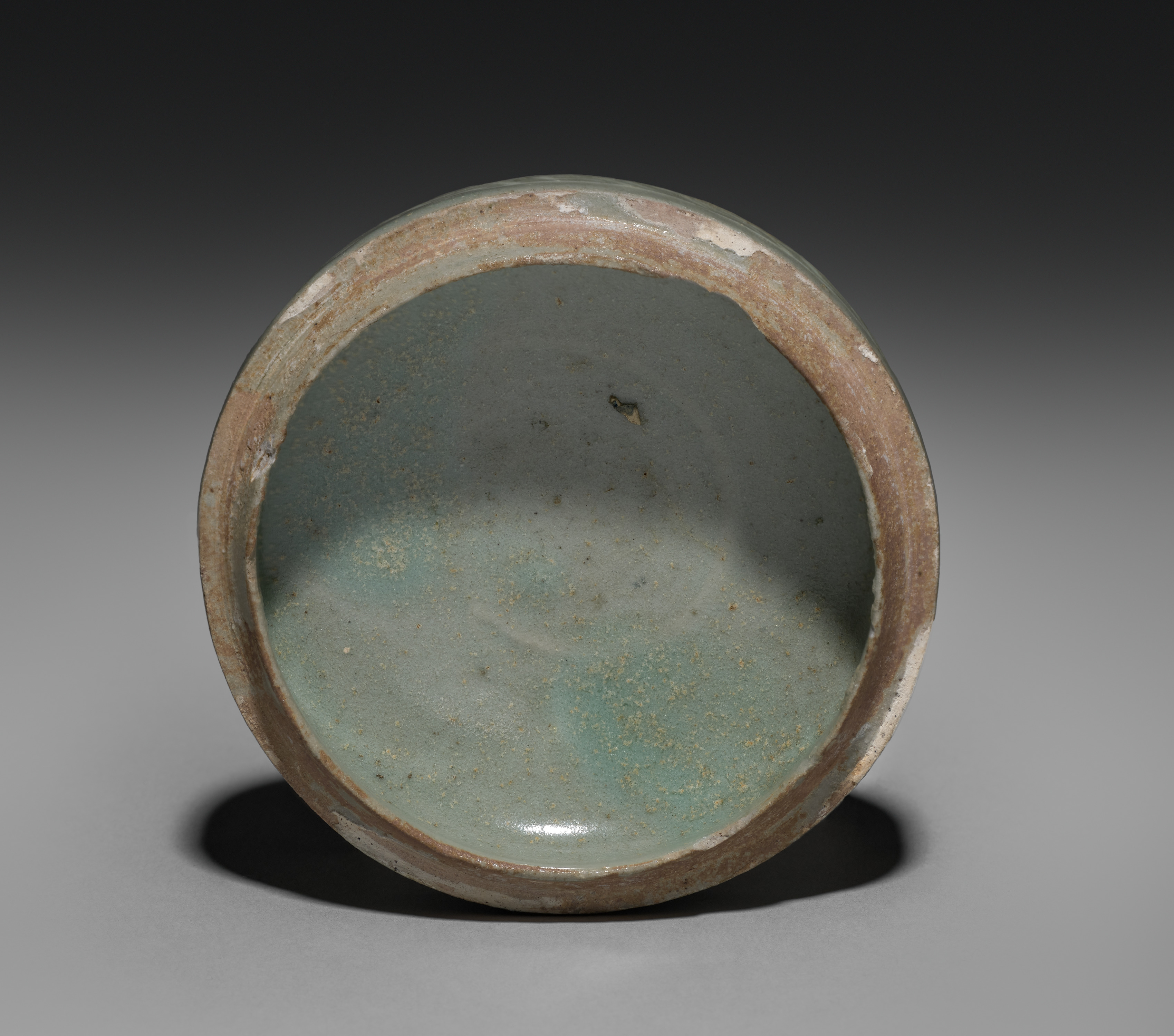The Cleveland Museum of Art
Collection Online as of April 25, 2024

Box
918–1392
(918–1392)
Diameter: 19.4 cm (7 5/8 in.); Overall: 12.7 cm (5 in.)
John L. Severance Collection 1916.1186.a
Location: not on view
Did You Know?
This lidded ceramic container was used to store either incense or cosmetics.Description
Celadons, spoons, seals, and bronze mirrors were the most common burial objects in tombs during the Goryeo period (918–1392). Once used to contain colored powder, rouge, and eyebrow gel for makeup, this small container was one of the standard goods that furnished elites' tombs. Both women and men used the grain powder of rice or millet for whitening their skin, safflower extract for rouge, and plant ash or soot for eyebrow gel. Yet, natural-looking makeup seems to have been the most favorable one in Korea according to the travelogue by Xu Jing (1091–1153), the Chinese diplomat who visited Korea in 1123.- Ch'a, Mi-rae, Kwi-suk An, Cleveland Museum of Art, and 국외소재문화재재단. The Korean Collection of the Cleveland Museum of Art. Edited by An Min-hŭi. First edition, English ed. Overseas Korean Cultural Heritage Series, 16. Seoul, Republic of Korea: Overseas Korean Cultural Heritage Foundation, 2021. Mentioned and Reproduced: P. 23, fig. 3; P. 77
- Korean Ceramics. The Asia Society Museum, New York, NY (organizer) (April 18-June 2, 1968); Royal Ontario Museum, Toronto M5S 2C6, Canada (July 15-August 30, 1968); The Art Institute of Chicago, Chicago, IL (October 1-November 15, 1968).
- {{cite web|title=Box|url=false|author=|year=918–1392|access-date=25 April 2024|publisher=Cleveland Museum of Art}}
Source URL:
https://www.clevelandart.org/art/1916.1186.a